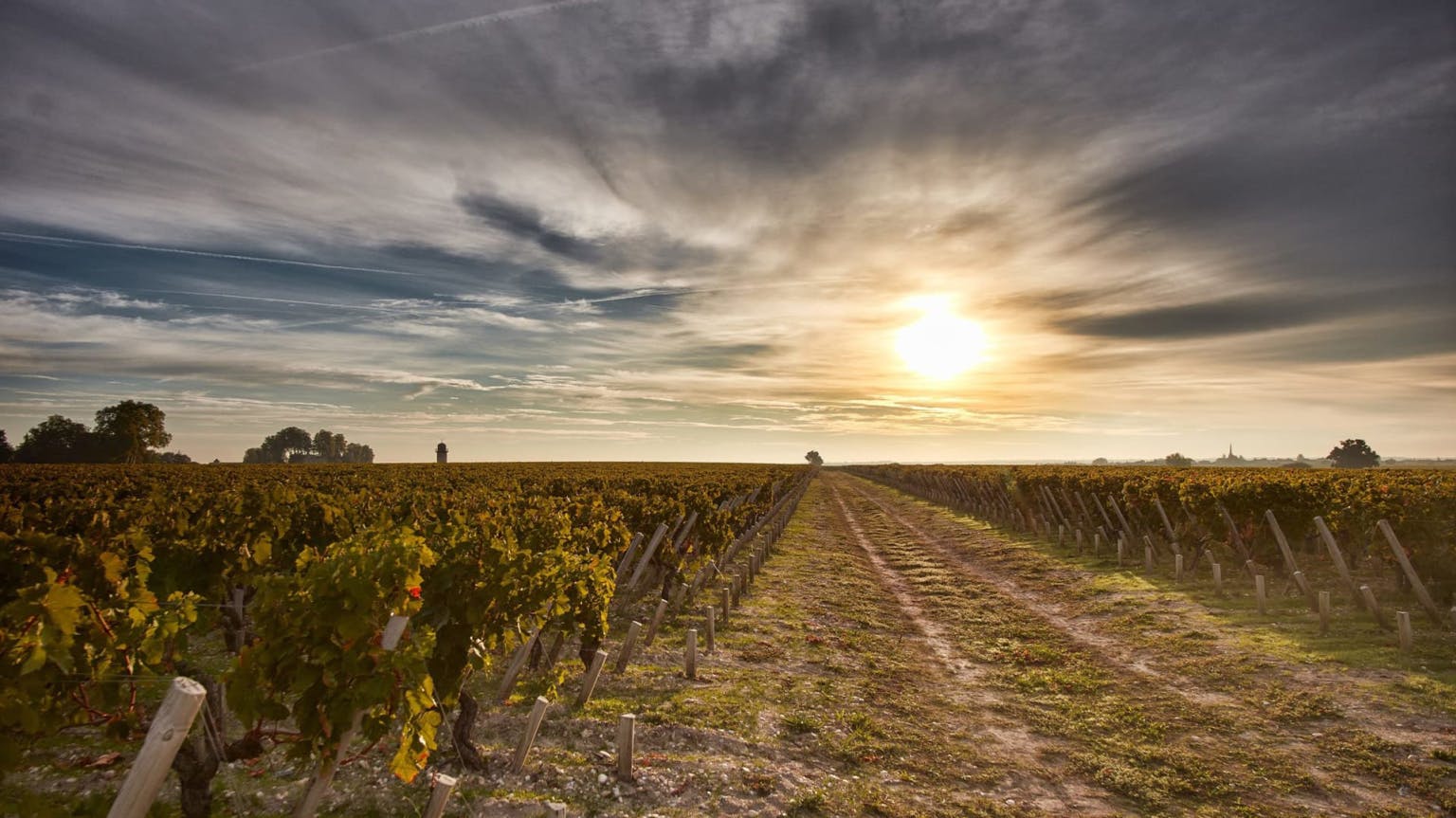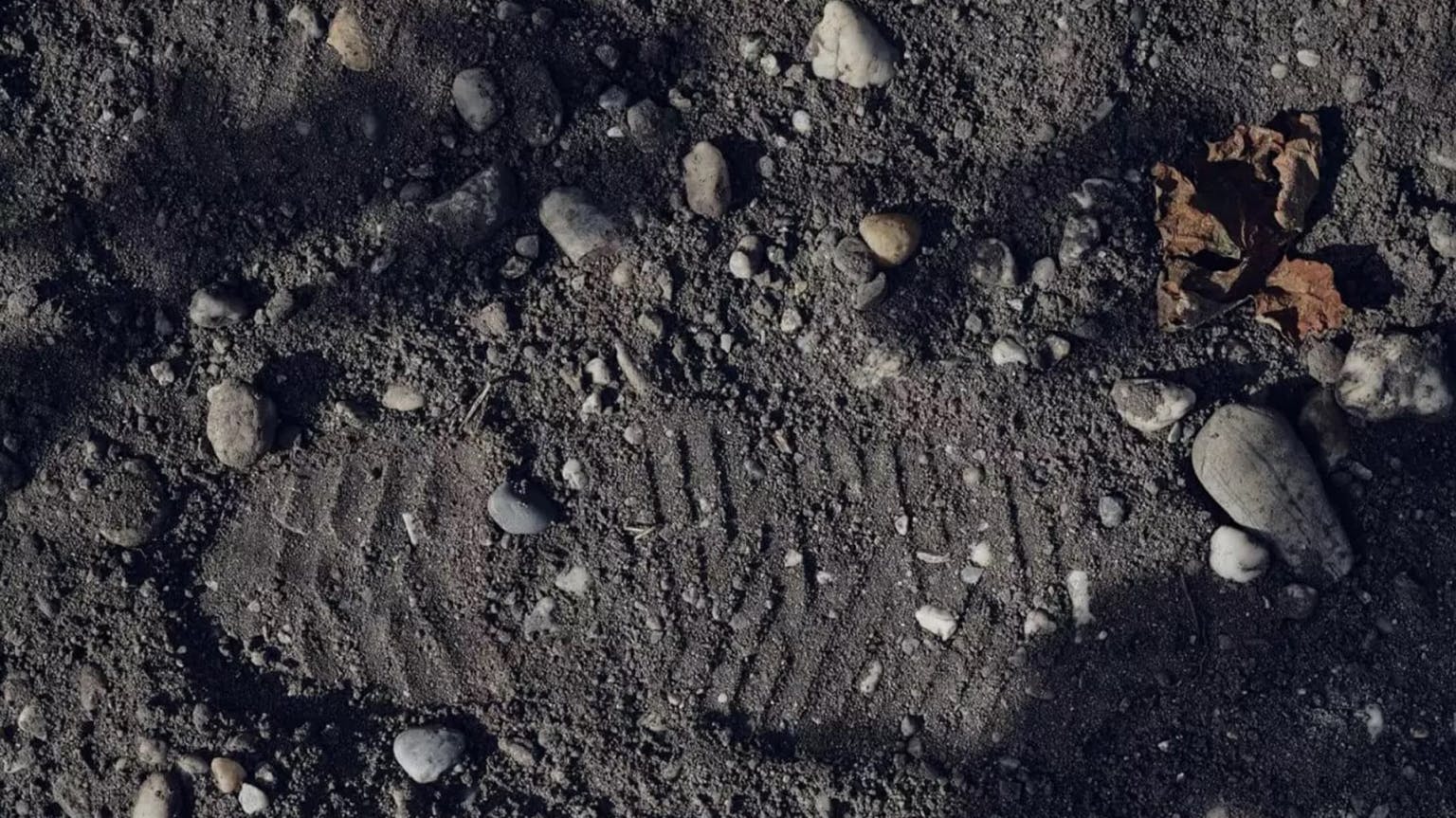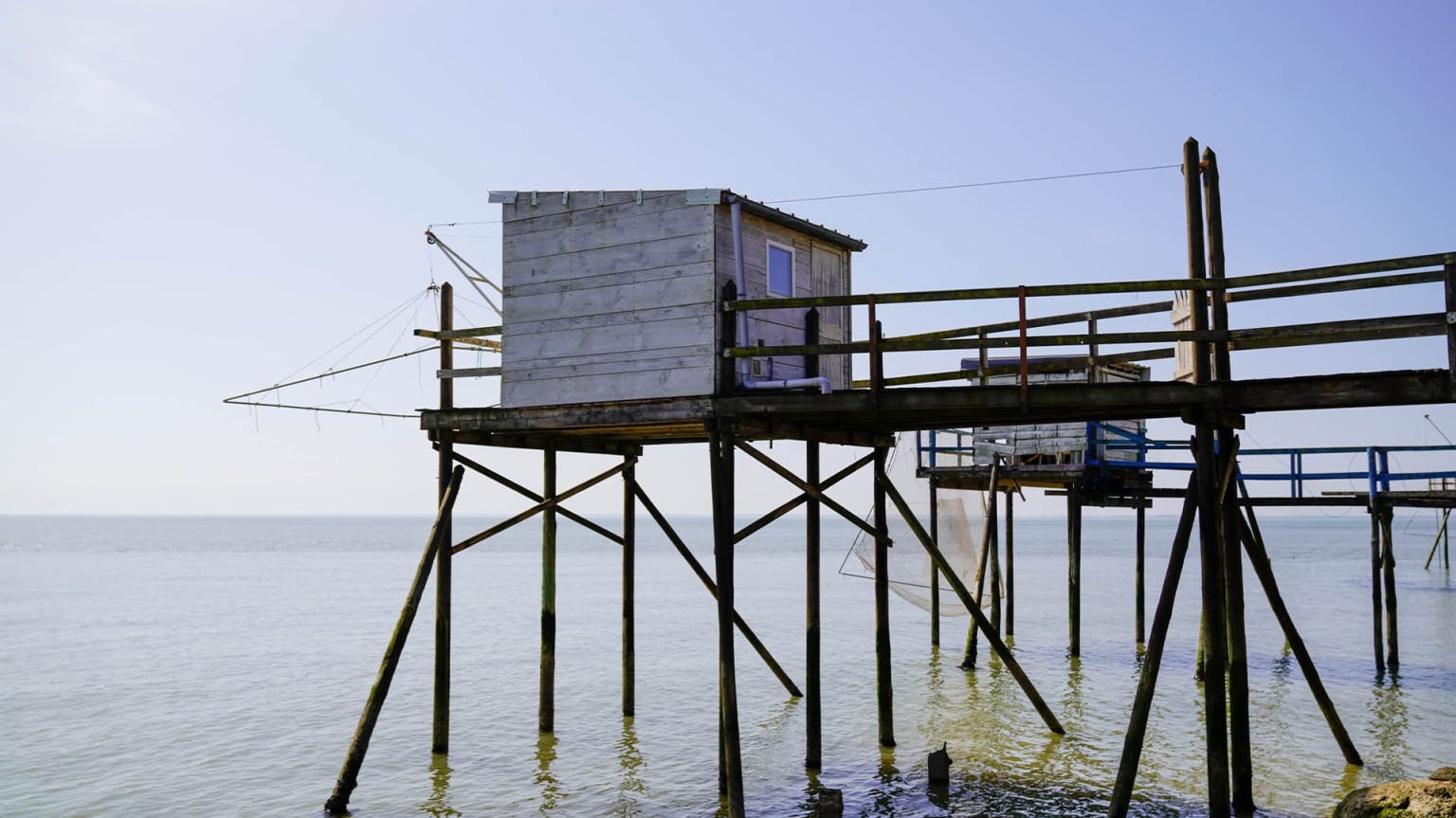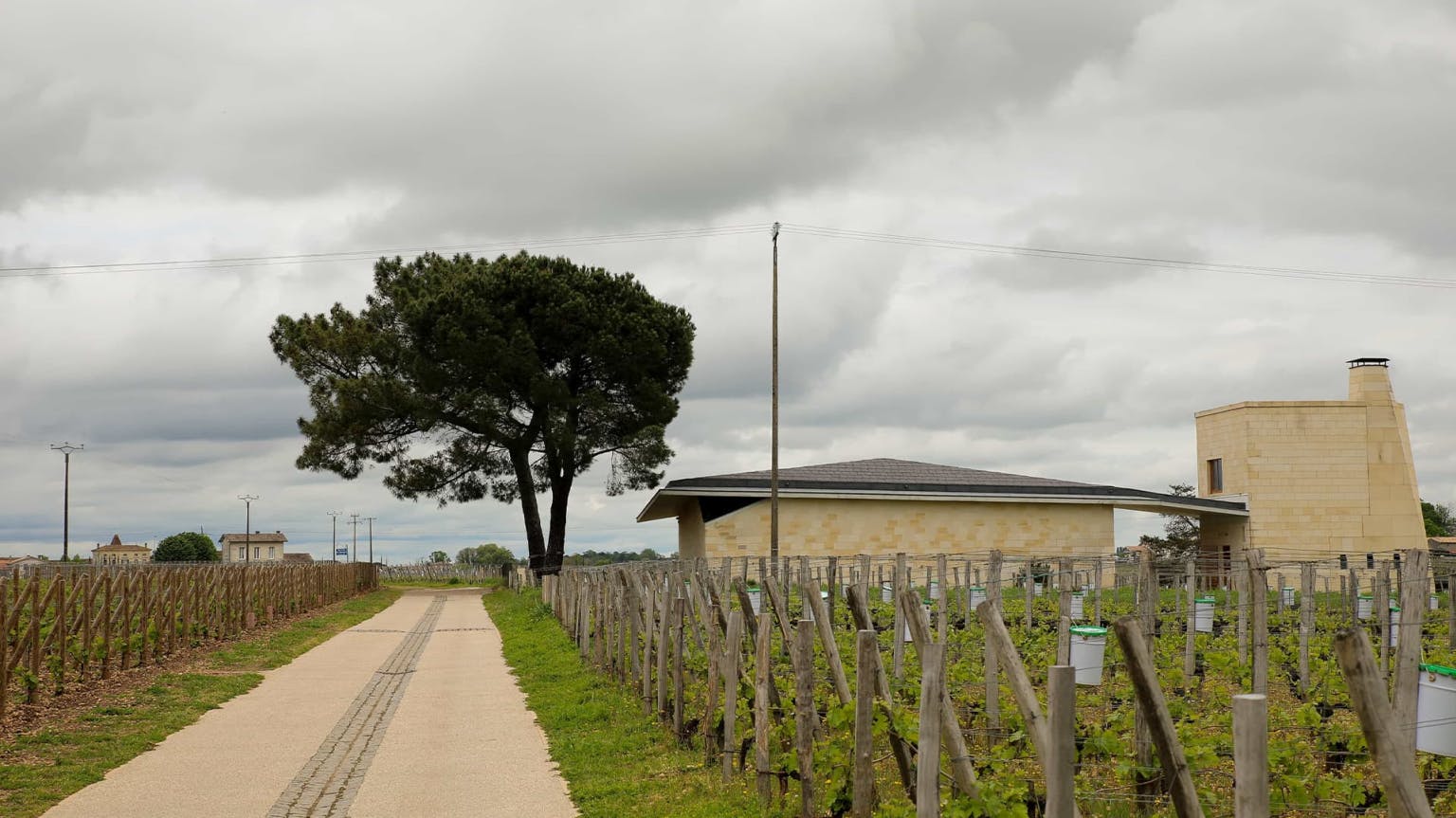Bordeaux is arguably the world’s most famous wine region – known for producing some of the finest wines in existence, with a long history stretching back to the Roman era. But the region is broadly divided in two – the Left and Right Bank. (Terms that you may also hear in reference to Paris, and – less frequently – Chablis.)
The region is defined by its waterways – a forked tongue that snakes southeast from the Atlantic. The Gironde estuary is fed by the Dordogne and Garonne rivers, with the Gironde flowing into the Atlantic. The south-eastern side of the Gironde and Garonne is the Left Bank, while the north-western side of the Gironde and Dordogne is the Right Bank. The section of land that sits between the fork of the Garonne and Dordogne is the intuitively named Entre-Deux-Mers (literally translating as “between two seas”), and is mostly home to more everyday, entry-level wine – although quality has certainly improved here with both climate change and technical advancements (such as Ch. Marjosse).
The Left and Right Banks, however, are where you’ll find Bordeaux’s most illustrious names. While both regions craft exceptional wines, they are extremely different in terms of terroir, the grapes grown, the estates themselves and how the wines are classified.

The Left Bank
The Left Bank is the aristocratic and historic home of fine wine in Bordeaux, famous for the 1855 classification of the Médoc, a ranking of the top estates of the region which still stands today, including the fabled First Growths – Ch. Latour, Ch. Lafite Rothschild, Ch. Mouton Rothschild, Ch. Margaux and Ch. Haut-Brion.
It was Bordeaux’s ties to England that saw it rise to prominence – after Eleanor of Aquitaine married Henry Plantagenet in 1152. With Bordeaux under English rule, favourable tax rates saw the industry thrive. But the Médoc was, at that point in time, a marshland not worthy of wine-growing – with the best wines coming from Graves estates like Ch. Haut-Brion (where vines have been grown since at least the early 15th century).
It was only in the mid-17th century that the Dutch drained the marshy Médoc, creating the well-drained gravel soils that are now a haven for Cabernet Sauvignon. It was after this that most of the region’s grandest properties were established.
The aforementioned 1855 classification cemented the Médoc’s place in history, with the wines of Sauternes and Barsac categorised at the same time. The wines of the Graves were classified in 1959, while the Left Bank is also home to the Cru Bourgeois and Cru Artisan classifications.

The Left Bank encompasses, from north to south: the Médoc (which includes the prestigious communes of Saint-Estèphe, Pauillac, Saint-Julien, Margaux, as well as Listrac and Moulis), the Haut-Médoc, Pessac-Léognan and Graves, as well as Barsac and Sauternes. Although the area of course encompasses dry whites and sweets, stylistically “Left Bank” is used mainly in reference to the reds, which represent the vast majority of production.
The soils on this side of the Gironde are dominated by gravel, with the best sites sitting on deep gravels over clay subsoils. The vineyards are more spread out here, with patches of woodland and other agricultural land between the pockets of fine terroir, making distances and journey-times between estates longer. The gentle, barely undulating landscape masks significant differences in the soils, which determine the success of a site, with the mounds divided by streams known locally as “jalles”. Deeper gravel has historically been a significant advantage in the region’s maritime climate, avoiding water-logging and retaining heat that helps to ripen the grapes. Proximity to the Gironde and its moderating influence can also help shield vines from frosts, an increasing threat in the springtime.
Estates can be quite large on the Left Bank – for example, Ch. Cos d’Estournel comprises 100 hectares – allowing for higher production levels, which means the wines tend to be more widely available and can be found more easily on the secondary market, even at the highest quality level. The properties also tend to have picture-perfect châteaux, immaculate architectural displays of the wealth of the region.

Cabernet Sauvignon leads the way in terms of plantings, thriving in those warm gravel soils (and complemented by parcels of Merlot, Cabernet Franc and Petit Verdot, with some limited Malbec and Carménère). The variety produces small berries with thick skins, creating tannic, age-worthy reds.
The wine style varies between commune and estate, but generally speaking the wines of the Left Bank are dominated by graphite, cassis and blackcurrant leaf, full-bodied yet with a more linear structure that Cabernet Sauvignon provides. Historically the wines were austere in youth and needed time in the cellar, but wines today are made to be more approachable so that they have longer drinking windows. With age, the best wines develop beautiful complexity with notes of leather, cedar, tobacco and more.
The Right Bank
The most famous wines of the Right Bank come from Saint-Emilion and Pomerol, however it is also home to: the Côtes de Blaye, Côtes de Bourg, Fronsac, Canon-Fronsac, Lalande-de-Pomerol, Côtes de Castillon, Côtes de Francs and the Saint-Emilion satellites – Lussac-Saint-Emilion, Montagne-Saint-Emilion, Saint-Georges-Saint-Emilion and Puisseguin-Saint-Emilion.
Although wine has long been made on the Right Bank, the wines – other than those of Ch. Cheval Blanc – were not known widely until relatively recently. The region’s modern history is tied to one man – the influential critic Robert Parker. He was one of the first to highlight the quality being produced at smaller Right Bank estates in the 1980s and 1990s, and put the wines on the international stage. His penchant for rich, ripe, concentrated styles prompted a wave of producers who did extensive green-harvesting, working with tiny yields, picking late, extracting heavily and ageing in new French oak, a style favoured by the far-reaching and famous consultant Michel Rolland.

Pomerol became home to the “garagistes”, after Jean-Luc Thunevin crafted his first vintage of Valandraud in his garage in 1991. These modern producers, who didn’t come with the land and smart châteaux found on the Left Bank, captured the imagination of consumers, and rapidly became highly sought-after.
Fashions have changed for the most part, and the wines produced today across the Right Bank are significantly more restrained – reflecting the general move toward freshness and aromatic finesse.
Of course, one reason that the wines of the Right Bank were less well-known was the smaller size of estates and therefore smaller volumes being produced – especially in Pomerol. Pétrus, for example, consists of 11.5 hectares, while Ch. Lafleur is a mere 4.5. In Saint-Emilion, Ch. Cheval Blanc and Angélus both have 39 hectares – a more generous vineyard area, but still relatively small in comparison to those in the Médoc. This means that the wines from the top estates are often strictly allocated and can be very hard to secure, with significantly less available on the secondary market.
The area feels very different to the Left Bank, with a more rolling landscape with more nooks and crannies, meaning you often can’t see what lies over the hill. The soils here are also significantly different, dominated by clay and limestone, with some sand and gravel. These soils stay cooler and retain more water, something that can be very helpful in hot, dry seasons (as in 2022). The finest wines come from the limestone plateau at the heart of Saint-Emilion and Pomerol plateau, with its pockets of rare blue clay. Limestone has an additional benefit of retaining freshness and acidity in the wines, with wines from limestone-dominant soils often having low pH.

Plantings are dominated by Merlot and Cabernet Franc (sometimes known locally as Bouchet), rather than Cabernet Sauvignon (which can struggle in the damp soils, although producers are planting a little more of the variety in response to climate change). Many wines from Pomerol are 100% Merlot (with estates such as Vieux Château Certan notable exceptions), while in Saint-Emilion the blends tend to include more Cabernet Franc. Merlot produces larger, thinner-skinned berries, and therefore Right Bank wines are generally softer, plusher, with a rounder texture, softer tannins, often floral with a redder fruit profile (cherry, plum), and can sometimes be exotic in perfume.
Unlike on the Left Bank, most of the wines are not classified formally, however Saint-Emilion introduced its own classification in the 1950s – one that has become a source of controversy.
Beyond Saint-Emilion and Pomerol, the other appellations can produce some fantastic wines, and – given the difficulty with buying additional land within these two illustrious areas – many of the Right Bank’s leading names have estates here (such as Ch. Lafleur’s Grand Village or Perrières, and LEglise-Clinet’s Montlandrie or Les Cruzelles). These can be a great source of value.
It’s worth noting that vintages are sometimes described as “Left Bank” or “Right Bank” years, and it is true that conditions can sometimes favour one side over the other, however the picture is often more complicated and results can vary according to individual estate, as well as commune.

